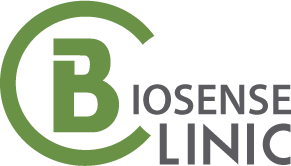
Why you really shouldn't feed your dog kibble?
Share

What's in kibble?
 One of the main differences between kibble and raw food is the amount of starch (or carbohydrate) they contain. While most raw foods contain 0 to 15% carbohydrate (with none of it starch), kibbles need starch to hold them together in those little kibble forms; and many kibbles are even 60% starch. If you’re feeding a grain-free kibble, don’t be fooled. It’s still Starch but just be in a different form. So instead of rice or corn, they’ll contain the same amount of peas or potatoes. Even grain-free foods are very high in starch.
One of the main differences between kibble and raw food is the amount of starch (or carbohydrate) they contain. While most raw foods contain 0 to 15% carbohydrate (with none of it starch), kibbles need starch to hold them together in those little kibble forms; and many kibbles are even 60% starch. If you’re feeding a grain-free kibble, don’t be fooled. It’s still Starch but just be in a different form. So instead of rice or corn, they’ll contain the same amount of peas or potatoes. Even grain-free foods are very high in starch.
 Furthermore, many of the commercial pet foods dry kibbles use low quality consumable grading meat (e.g. diseased cow, unethically slaughtered animal) that can contain residues of drugs, vaccines, antibiotics, toxins and bacteria.
Furthermore, many of the commercial pet foods dry kibbles use low quality consumable grading meat (e.g. diseased cow, unethically slaughtered animal) that can contain residues of drugs, vaccines, antibiotics, toxins and bacteria.
How does kibble being manufactured?
 The extreme high heat extrusion process (commonly over 180℃) in manufacturing kibbles as you can image it basically just destroys much nutrients values of the final product. The kibble is left with proteins that have been denatured, enzymes that are rendered inactive, and any natural, beneficial microflora (good bacteria) are no longer viable. Also, what many people are unaware of, is that in addition to substandard ingredients, there are many forms of toxins introduced into our pets’ bodies through these highly processed, cooked, kibble diets. These toxins include: aflatoxins, heterocyclic amines, acrylamides, and most recently discovered in dry, cooked pet foods, PBDEs (polybrominated diphenyl ethers) a chemical used as a flame retardant. 3
The extreme high heat extrusion process (commonly over 180℃) in manufacturing kibbles as you can image it basically just destroys much nutrients values of the final product. The kibble is left with proteins that have been denatured, enzymes that are rendered inactive, and any natural, beneficial microflora (good bacteria) are no longer viable. Also, what many people are unaware of, is that in addition to substandard ingredients, there are many forms of toxins introduced into our pets’ bodies through these highly processed, cooked, kibble diets. These toxins include: aflatoxins, heterocyclic amines, acrylamides, and most recently discovered in dry, cooked pet foods, PBDEs (polybrominated diphenyl ethers) a chemical used as a flame retardant. 3
 Persistent intake of high starch and sugar contents from extruded processed commercial dry kibble pet food can cause chronic inflammation and severe oxidation stress internally, major gum diseases, and eventually leading to many health issues. Chronic degenerative diseases, auto-immune diseases, allergies, kidney, pancreatic and liver disease are all rampant within our pet populations and cancer rates continue to rise. This has also becoming a huge emotional and financial burden to pet owners.
Persistent intake of high starch and sugar contents from extruded processed commercial dry kibble pet food can cause chronic inflammation and severe oxidation stress internally, major gum diseases, and eventually leading to many health issues. Chronic degenerative diseases, auto-immune diseases, allergies, kidney, pancreatic and liver disease are all rampant within our pet populations and cancer rates continue to rise. This has also becoming a huge emotional and financial burden to pet owners.
They love us unconditionally. We should choose the best for them.
 A proper dog diet is the No.1 crucial step and top priority for your pet’s health. A raw, species appropriate diet is the best defense we can give our pets to thrive and maximize their opportunity for a long, healthy life. As caretakers of these amazing furry family companions who unconditionally love us and enhance our lives, we feel that it is not only fair to provide this to them, but rather our responsibility.
A proper dog diet is the No.1 crucial step and top priority for your pet’s health. A raw, species appropriate diet is the best defense we can give our pets to thrive and maximize their opportunity for a long, healthy life. As caretakers of these amazing furry family companions who unconditionally love us and enhance our lives, we feel that it is not only fair to provide this to them, but rather our responsibility.
References
2.Knueven, Doug, DVM, CVA, CAC. The Holistic Health Guide, Natural Care for the Whole Dog. (2008).
3.Lippert, Gerard, DVM and Sapy, Bruno, DVM. Relation Be- tween the Domestic Dogs’ Well-Being and Life Expectancy. (2003).
4.Venier, Marta and Hites, Ronald. Flame Retardants in the Serum of Pet Dogs and in Their Food. Environ. Sci. Technol. 2011, 45 (10):4602-4608.
5.Pasternak, Henry, DVM, CVA. Healing Pets with Nature’s Miracle Cures. (2001): 13, 63-80.
6.Felton, J.S., M. Jägerstad, M.G. Knize, K. Skog, K. Waka- bayashi, Contents in Foods, Beverages and Tobacco, in: M. Na- gao, T. Sugimura (Eds.), Food Borne Carcinogens: Heterocyclic Amines, Wiley, West Sussex, 2000, pp. 31–71.
7.Knize, M.G, Salmon, C.P., Felton, J.S. Mutagenic Activity and Heterocyclic Amine Carcinogens in Commercial Pet Foods. Mutagenic Research/Genetic Toxicology and Environmental Mutagenesis. August 2003 539 (1-2): 195-201.6.
8.Rohrmann, S., Hermann, S. and Linseisen, J. Heterocyclic Aro- matic Amine Intake Increases Colorectal Adenoma Risk. Am J Clin Nutr. May 2009 89 (5): 1418-24.
